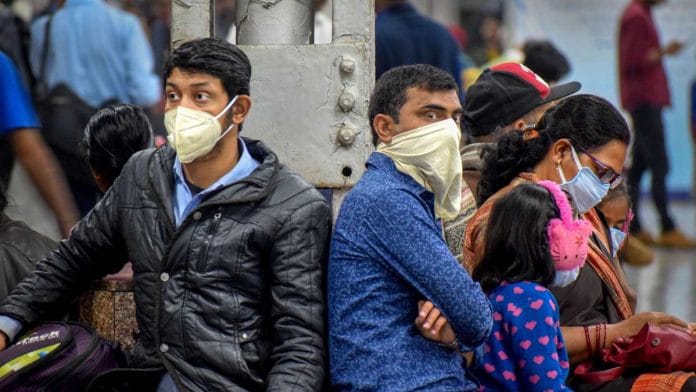New Delhi: The novel coronavirus pandemic has brought the world to a standstill and scientists across the world have been learning new things about the deadly virus.
ThePrint brings you some of the top research developments on Covid-19 from across the globe.
New 3D-printing technology can make 1,000 masks a day
To counter the shortage of protective gear for medical staff, a team at the Northwestern University have used a novel 3D-printing technique to develop 1,000 face shields in a single day. The researchers have said these plastic masks are washable and reusable.
While 3D-printing technology enables scientists to produce low-cost copies of any designed item, speed has often been a limiting factor.
But researchers at Northwestern had last year created a new 3D printing technique called “high-area rapid printing” (HARP) that can print about half a yard in an hour — a record throughput for the 3D printing field.
The university is partnering with local manufaturing and packaging companies to get these easy to assemble masks to hospitals.
Also read: Mumbai start-up builds AI-based X-ray technology to help detect Covid-19
Covid-19 patients carry virus even after symptoms disappear
A new study has shown that half of the patients treated for mild Covid-19 infection still had coronavirus for up to eight days and were shedding the virus even after symptoms disappeared.
The research, published in the American Journal of Respiratory and Critical Care Medicine, highlights the need for patients to remain in isolation even after their recovery to prevent transmission.
The team studied 16 patients with Covid-19 who were treated and released from the Treatment Center of PLA General Hospital in Beijing between 28 January and 9 February 2020. These patients were discharged after their recovery and confirmation of negative viral status by at least two consecutive polymerase chain reaction (PCR) tests.
The study found that half of the patients kept shedding the virus even after resolution of the symptoms. Researchers have warned that more severe infections may have even longer shedding time.
Travel restrictions most useful in early, late phases of epidemic
A research led by the University of Oxford and Northeastern University has shown that travel restrictions only help stop transmission in the early and late stages of the pandemic.
The researchers have said that restrictions of travel in China’s Wuhan came too late. They found that the impact of travel restrictions declines as an epidemic grows.
Provinces outside Hubei that acted early to test, track and contain imported Covid-19 cases fared the best at preventing or containing local outbreaks.
The study also found that local person-to-person transmission happened extensively early on in the coronavirus outbreak.
However, with an average incubation period of five days, and up to 14 days in some cases, these mobility restrictions did not begin to positively impact the data on new cases for over a week — with things appearing to get worse in the 5-7 days immediately after the lockdown as local transmission was well under way.
Physical distancing the best bet against coronavirus spread
Computer simulations have shown that a combined approach of physical distancing interventions — comprising quarantine for patients and their families, school closure, and workplace distancing — is most effective at reducing the number of SARS-CoV-2 cases.
The study, published in The Lancet Infectious Diseases journal is the first of its kind to investigate using these options for early intervention in Singapore using simulation.
While less effective than the combined approach, quarantine plus workplace measures presented the next best option for reducing SARS-CoV-2 cases, followed by quarantine plus school closure, and then quarantine only, the researchers say.
Despite the number of Covid-19 cases continuing to increase in Singapore, schools have not been closed, and workplace distancing is recommended, but it is not national policy.
Also read: Soldiers failing to disclose Covid-19 information will invite action under Army Act






